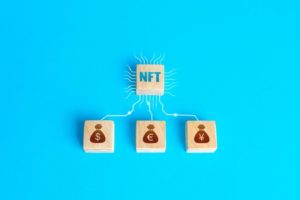Much has been written about the ecological footprint of the blockchain. Minting an NFT of digital art is technically complicated, with most based on the Ethereum blockchain.
However, the ETH blockchain is inefficient and ecologically costly. First going live in 2015, ETH is considered primitive by today’s standards. Selling just one NFT on ETH has a carbon footprint of 100 kgCO2, or the equivalent of a flight from Singapore to Bangkok. Scale that up, and the ecological impact becomes clear.
As artists who care about the environment, what can we do? On the one hand, NFTs are a revolutionary way to ensure equitable distribution of the proceeds of art. On the other hand, the UN Sustainable Development Goals also exhort countries to prioritise the environment as a holistic part of economic growth.
Luckily, more sustainable blockchains are being developed. Unlike proof-of-work (PoW) blockchains like ETH or Bitcoin, proof-of-stake (PoS) blockchains phase out mining in favour of a consensus mechanism. In addition, PoS does not require the great reams of hardware associated with mining, significantly lowering barriers to entry. As a result, PoS blockchains are hundreds of times more efficient than traditional PoW blockchains.
Here are some examples of environmentally sustainable blockchains.
Tezos
Tezos’ mainnet went live in 2018 as a pioneering PoS blockchain, raising US$232 million in one of the biggest initial coin offerings (ICOs) at the time. The total annual carbon footprint of the Tezos blockchain is claimed to be equivalent to the average energy footprint of 17 global citizens.
Polkadot
Polkadot’s protocol is designed for scalability. It provides a primary chain (relay-chain), which can host a large number of globally consistent data structures (parachains) that can be validated. It claims to use the equivalent of around 6.6 US households’ worth of energy per year.
Flow
Flow was conceived by the team behind CryptoKitties, the wildly successful blockchain game that quickly outgrew its original home on the ETH blockchain. It is a decentralised network, designed with the metaverse in mind. It claims that minting an NFT on Flow takes less energy than a Google search or Instagram post.




